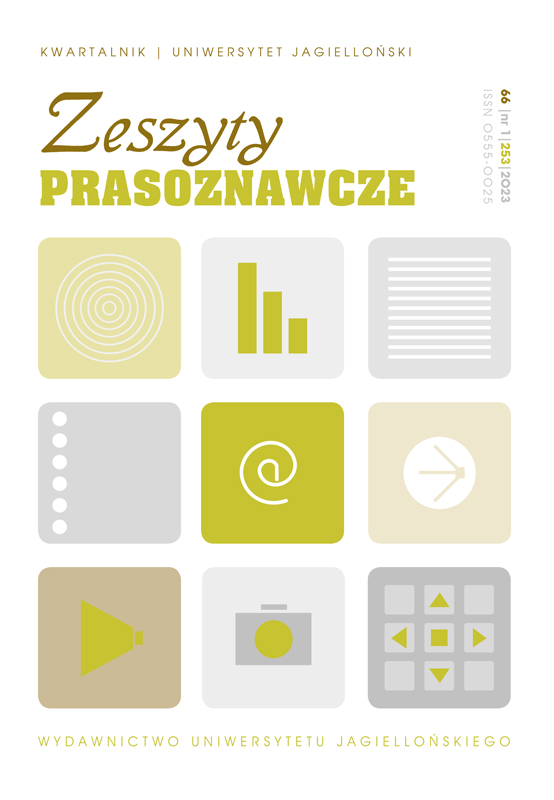Kierunek ewolucji składni reportażowej. Badanie porównawcze XX- i XXI-wiecznych polskich reportaży książkowych. Wprowadzenie do problematyki
The Direction of Reportage Syntax’ Evolution. A Comparative Study of 20th and 21st Century Polish Book Reportages. Introduction to the Issues
Author(s): Katarzyna OstrowskaSubject(s): Media studies, Studies of Literature, Communication studies
Published by: Wydawnictwo Uniwersytetu Jagiellońskiego
Keywords: book reportage; 20th-century reportage; 21st-century reportage; the evolution of syntax
Summary/Abstract: This article aims to investigate the direction of the evolution of reportage syntax and the main syntactic tendencies on the basis of Polish book reports from the 20th and 21st centuries. The material base for the reportages created in the 20th century consists of documentary texts such as: „ Dymy nad Birkenau” by Szmaglewska, „Krata” by Gojawiczyńska, „Na nieludz-kiej ziemi” by Czapski, „Inny świat” by Herling-Grudziński, „Raport o stanie wojennym” and „Karnawał i post” by Nowakowski, „Kadencja” by Szczepański. On the other hand, the corpus of the newest Polish book reportages from the 21st century includes: „Oko świata. Od Konstantynopola do Stambułu” by Cegielski, „Zabójca z miasta moreli. Reportaże z Turcji” by Szabłowski, „Czwarty pożar Teheranu” by Kęskrawiec, „Krasnojarsk zero” by Jastrzębski i Morawiecki, „Abchazja” by Górecki, „Dom nad rzeką Loes” by Janiszewski, „Dryland” by Piskała, „Wielki przypływ” by Mikołajewski, „Ziarno i krew. Podróż śladami bliskow-schodnich chrześcijan” by Rosiak, „Dybuk. Opowieść o nieważności świata” by Kopczyński and Sajewicz. The comparability of the research results was ensured thanks to the applica-tion of the postulates of the quantitative and qualitative methodology. The article uses the representative method (200 statements from each text were selected), the traditional syntax analysis method (based on the achievements of Jodłowski), the quantitative method and the comparative method (analysing the frequency of single and complex statements). The analysis of the research material allowed for the presentation of syntactic tendencies, such as: the tendency to complicate syntactic structures, an increase in syntactic intellectualisation, weaker emotionalisation, verbal character of the syntax and a tendency towards explication.
Journal: Zeszyty Prasoznawcze
- Issue Year: 2023
- Issue No: 1 (253)
- Page Range: 91-106
- Page Count: 16
- Language: Polish

